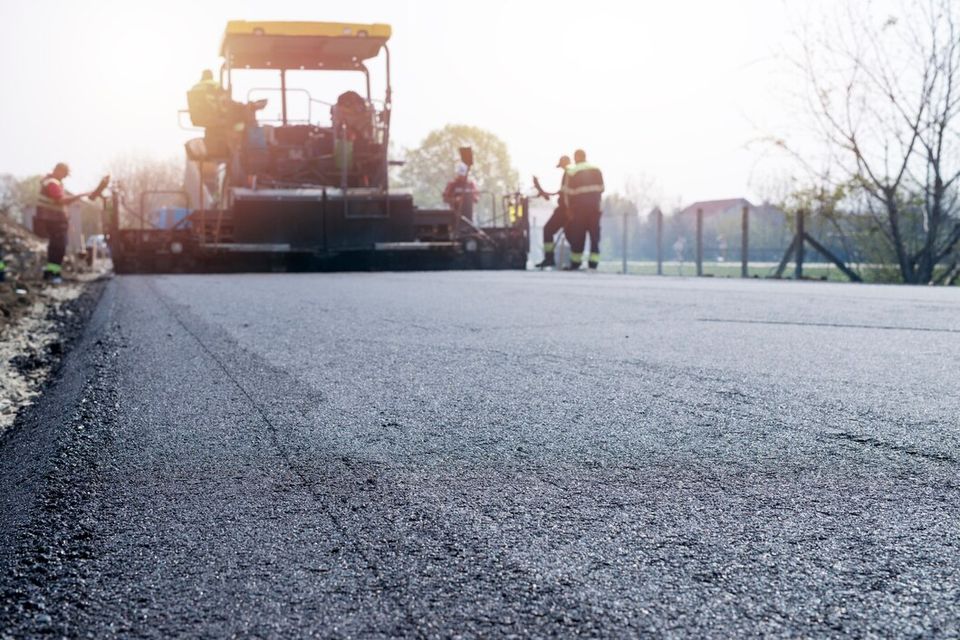As we continue to push the boundaries of civil engineering and strive for sustainability in construction practices, it’s crucial to explore innovative methods that not only meet project needs but also conserve resources. Asphalt pulverizing, often overlooked, is one such method that brings numerous benefits to the table—it's efficient, cost-effective, and environmentally friendly.
Imagine being able to recycle the existing asphalt material directly on your project site. This process not only reduces material waste but also lowers the costs associated with transportation and raw materials.
In this discussion, we dive deep into the nuts and bolts of asphalt pulverizing. This technique involves grinding up an existing asphalt surface and base to create a recycled mix that can be reused right there on your project. By integrating this method into your practice, you are essentially turning old, deteriorated pavement sections into a solid foundation for new surfacing.
What Is Asphalt Pulverizing and How Does It Work?Asphalt pulverizing is a process that breathes new life into old, worn-out pavement, turning what was once deemed waste into a valuable resource. We utilize specialized machinery to grind up existing asphalt, which includes the surface and some of the sub-base, into a fine material. This pulverized asphalt can then be reused as a base or subbase material for new paving projects. The whole operation is carried out on-site, which reduces the need for transporting materials and thus lowers the carbon footprint associated with the construction process.
The procedure begins with our team assessing the current condition of the pavement to determine the depth of asphalt removal required. Using a powerful milling machine, we methodically grind the asphalt down to the specified depth, capturing the material which is immediately processed through our equipment.
This ensures that the aggregate size is consistent and suitable for reuse. Once pulverized, the material is spread evenly across the project site and compacted to form a strong, durable base for the new pavement layer. This method not only recycles material but also stabilizes the underlying soil, improving the longevity and resilience of the pavement.
Benefits of Asphalt Pulverizing for Sustainable ConstructionEmbracing asphalt pulverizing offers a host of benefits, particularly from a sustainability perspective. Here’s why it’s an intelligent choice for modern construction:
1. Reduction in Material Waste: By recycling asphalt on-site, we drastically cut down on waste. This conserves landfill space and reduces the environmental impact of extracting and processing new raw materials.
2. Lower Overall Costs: Transport costs are significantly reduced since materials are processed and used at the construction site. Additionally, the cost of new materials is minimized, making asphalt pulverizing a cost-effective solution for paving projects.
3. Energy Efficiency: Since less transportation and raw material processing are required, the total energy expenditure for a project is much lower. This contributes to a smaller carbon footprint for our construction projects.
4. Enhanced Pavement Durability: The use of pulverized asphalt as a base material helps to create more compact and stable foundation layers. This results in pavements that can withstand heavier loads and last longer, reducing the need for frequent repairs.
5. Quick Project Turnaround: Asphalt pulverization is faster than traditional methods that involve the complete removal and replacement of old pavement. This efficiency minimizes disruption, especially in busy urban areas, leading to quicker project completion and less inconvenience to the public.
Incorporating asphalt pulverizing into construction projects not only supports sustainability goals but also enhances the overall efficiency of paving operations. By choosing this smart approach, we’re able to deliver durable, cost-effective, and environmentally friendly paving solutions.
Comparing Asphalt Pulverizing to Traditional Repaving MethodsWhen considering pavement maintenance, the choice between asphalt pulverizing and traditional repaving methods plays a crucial role in project success and sustainability. Traditional repaving often involves the complete removal of the existing pavement layer, disposal of old materials, and installation of new asphalt. This method, while effective, is resource-intensive and often more disruptive to traffic flow and local activities.
In contrast, asphalt pulverizing simplifies the process. This method recycles the existing asphalt by milling it into smaller pieces, which are then mixed with underlying materials to create a new, stable base layer.
This process reduces waste and the need for new materials, making it a more environmentally friendly option. Pulverizing also cuts down on construction time significantly by eliminating the need to haul away old pavement and bring in new asphalt. These efficiencies translate to reduced project costs and less environmental impact, aligning with modern sustainability goals.
Best Practices for Effective Asphalt PulverizationTo ensure that an asphalt pulverization project is successful, adhering to several best practices is essential. First, a thorough assessment must be conducted to determine the existing asphalt's suitability for pulverization. This includes evaluating the depth, material composition, and overall condition of the pavement. Utilizing advanced technology, such as GPS and laser-guided equipment, ensures that the pulverization is performed with precision, enhancing the quality of the outcome.
Second, it's crucial to engage experienced operators who understand the complexities of asphalt pulverization. Their expertise not only secures the integrity of the process but also optimizes the use of resources.
Finally, maintaining the equipment in top condition is imperative to avoid breakdowns and ensure that the project remains on schedule. Regular inspections and adherence to a maintenance schedule prevent potential delays and ensure that the machinery performs at its best throughout the project.
ConclusionAs the leading asphalt pulverization and
soil stabilization company, we persistently seek to innovate and apply the best techniques in our projects. Asphalt pulverizing has emerged as a key player in sustainable construction, offering a greener, more efficient alternative to traditional methods. By embracing these advanced practices, we can significantly enhance road quality and durability while supporting environmental conservation.
For more information on how these innovative practices can be applied to your next project, reach out to us at Terra-Firma Stabilization & Reclamation today. Let's work together to build sustainable solutions that stand the test of time.

